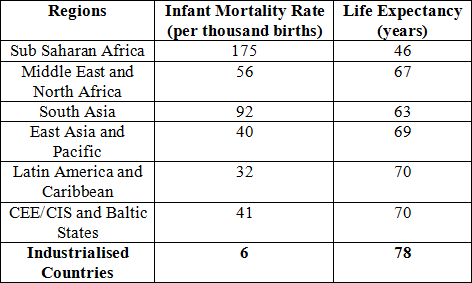During a career in the mining industry, I have lived and worked in Australia, Papua New Guinea, Canada and the US; I have also worked for months at a time in New Zealand and South Africa, and for weeks at a time in Alaska, Mexico and Indonesia. I only had to move around with my eyes open to see that people living in industrialised and mineral-intensive communities enjoyed better health and welfare, more individual freedom and greater opportunity for personal development than those in non-industrialised, less mineral intensive communities.
However the debate on the value of mineral-intensive industrialisation seems to have remained at a tactical level, conducted in terms of flora and fauna versus jobs and tax revenue. Flora and fauna have won. The two vital strategic drivers of human behaviour are not flora and fauna: they are survival and caring for the young. These drivers are conveniently quantified as life expectancy and infant mortality rate (IMR).
The intrinsic civilising value of industrialisation and mineral use is found not in tactical economic factors but rather in the beneficial strategic contribution they make to reducing the rate of infant mortality and increasing life expectancy.
Advertisement
My reference is The State Of The World's Children, an annual publication of the United Nations Children’s Fund. The table below is an extract from Table 1 in the 2005 issue.

I have concentrated on IMR because it is quantifiable and bulletproof; every rational person agrees that a high IMR is bad and a low one is good.
A low infant mortality rate does not happen without industrialisation. Industrialisation does not happen without a reliable supply of metals and energy minerals.
The connection is also transparently causal. Industrialisation has been driven by electricity for the past 100 years. The generation, transmission and distribution of electrical power are essential to industrialisation and social development. Copper, aluminium, steel, energy minerals and concrete are required in large amounts to provide these services.
It is also self-evident that the life-sustaining benefits of industrialisation require intensive mineral use, such benefits as a reliable supply of food and water, hot water, refrigeration, hygienic waste disposal and modern medical facilities. Widespread access to such facilities, a privilege available only to industrialised communities, requires large amounts of metals and other minerals.
Advertisement
A lower IMR has not been restricted to the industrialised (wealthy) countries. Since 1960 the infant mortality rate has fallen by 84 per cent in the industrialised countries, 42 per cent in the least developed countries and 55 per cent in the whole world. During this interval the population of the least developed countries has increased almost 200 per cent, that of the industrialised countries 25 per cent.
Less developed countries derive "slipstream" benefits from the more industrialised countries in the form of trade, technology transfer, foreign investment and aid in various forms including family planning and education assistance, especially the education of girls and women.
An encouraging aspect of the slipstream effect is that countries today are achieving a reduction in the rate of infant mortality with a lower degree of mineral intensity than was required in previous decades. For example, Argentina in 2003 had an IMR of 19 and a copper use of 1.2kg per head. The Netherlands in 1960 had a similar IMR but with a copper use per head of 2.8kg. This phenomenon is widespread and persistent.
The potential sources of extra minerals are numerous. The crust of the Earth is 30-45kms thick under the continents. Almost all metal production to date has been extracted from the top one kilometre. Much remains to be found and extracted below this.
Extensive resources also will be recovered from more accessible deposits in South America, Central Asia, Africa and elsewhere. Mineralised nodules on the sea floor might also be recovered. Extensive coal and gas reserves exist currently; exploration in deeper water will discover more oil and gas and increasing prices will increase oil reserves.
Discuss in our Forums
See what other readers are saying about this article!
Click here to read & post comments.
25 posts so far.